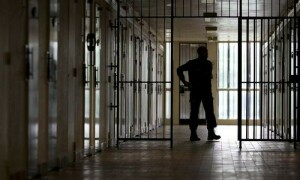UNDER what conditions do we live in our country? A detailed profile of our households is provided by the Pakistan Bureau of Statistics in its Pakistan Social and Living Standards Measurement Survey 2019-20 (PSLM). A home is more than just a shelter. A stark feature of our living standards is that 25 per cent of our households are one-room dwellings. Not everything is gloomy though, as in 2014-2015 the figure was higher — 28pc. Moreover, the majority of households (69pc) have two to four rooms, up from 67pc. The share of households with five or more rooms remains at 6pc. Shaheed Benazirabad district has the largest percentage (78pc) of households with just one room. Overall, too, Sindh is the worst performer here with 35.6pc of households having only one room, followed by Baluchistan (23.3pc), Punjab (22.6pc) and KP (16.3pc).
Close to half of our households do not have a specific place for washing hands with soap; 54pc have this facility. Ten per cent of households have no toilet, 83pc have flush toilets, and 7pc have non-flush toilets. Seventeen per cent of households in Balochistan are without toilets; the figure is 11pc for KP and 9pc for Sindh and Punjab each.
Households not connected to the sewerage system are in a majority (73pc). Only 27pc are connected. Regarding drainage, 36pc of households are not connected to any system; 35pc are connected to open drains, 23pc to underground drains, and only 6pc to covered drains. Garbage and solid waste are collected by municipalities for only 18pc of households. Most households (82pc) dump their garbage in open spaces, roads, streets or public bins. How can we describe our beloved country? Garbage is strewn everywhere. The share of households throwing their garbage on the streets is 6.8pc (of 35 million households). This share is highest in Sindh at 15pc.
Houses with roofs made up of T-iron or girders make up the majority at 39pc, followed by RCC or RBC (33pc), wood or bamboo (23pc) and sheet or other material (5pc). The share of wooden or bamboo roof houses in Sindh is 28.7pc, but in Tharparkar district it is 92.2pc. Most dwellings (80pc) have brick walls; mud walls comprise 15pc, and wood or other material 5pc.
It is hardly surprising that our country is at the bottom quarter of countries in terms of health indicators.
Most households draw their drinking water through pumps — motor pumps (30pc), and hand pumps (23pc). Only 22pc have access to tap water. Households relying on filtration plants comprise 10pc, tankers 4pc, dug wells 3pc and rivers or ponds 2pc. One would expect the use of hand pumps to reduce with development. But in Sindh, it has increased from 34pc in 2014-15 to 36pc in 2019-20. Moreover, tap water sources have also declined in Sindh from 41pc to 35pc. What is happening in Sindh? Progress in reverse? No household in Larkana has access to tap water according to this survey; all households rely on hand or motor pumps. This is difficult to believe. Are we really living in the 21st century? One silver lining is that almost all the water sources are declared as an “improved source of drinking water” and 94pc of our households have access to it. Note that an improved source of water may not necessarily be alright for drinking, but it is far better than drinking from a pond.
Given the dismal water quality and sanitation and hygiene conditions, it is hardly surprising that our country is at the bottom quarter of countries in terms of health indicators. Our life expectancy is 67 years, the lowest among South Asian countries. It is 73, 70, 71 and 77 years respectively for Bangladesh, India, Nepal and Sri Lanka. We rank 148th among 194 countries in the world. One of the reasons for this is the extremely high infant mortality rate at 53 per thousand live births. It is 39 in India, 32 in Bangladesh, 18 in Turkiye, and 16 in Iran. Should we not all be ashamed about this situation, along with our provincial governments who are now responsible for public health after the 18th Amendment? The federal government, of course, is also always responsible.
In terms of food security, not all households feel secure. During the first wave of Covid-19 (March 2020 — July 2020), about 40pc of households became food-insecure as they did not have access to sufficient and good-quality nutritious food. For fiscal year 2019-20, PSLM reported 16pc of households as food-insecure, and 84pc as food-secure. Of food-insecure households, 2pc suffered severe food insecurity, while 14pc faced low or moderate insecurity. Severe food insecurity refers to extreme hunger and poverty as households do not have access to any meals. Low or moderate insecurity refers to access to both low quality and quantity of food — not sufficient for a nutritious life. Future surveys of PSLM are likely to report a reduction in food insecurity as both growth and employment increased significantly during FY21 and FY22.
Our educational attainments strongly reflect our living standards. This survey found our literacy rate to be 60pc. This compares unfavourably with all our neighbours, except Afghanistan with 37pc. It is 74pc in India, 75pc in Bangladesh, 86pc in Iran and 97pc in China. One of the main reasons for low literacy is that 32pc of our children (five to 16 years of age) are out of school. This percentage is highest in Balochistan at 47pc, closely followed by Sindh at 44pc, KP at 30pc and Punjab at 24pc. Learned Punjab is a well-deserved slogan when compared to the other provinces in this respect.
Can we improve our standards of living in spite of our incompetent provincial governments? Yes, we can, even as individuals. We need to improve our households’ cleanliness and hygiene to the greatest extent possible. We should not throw our garbage in front of our households. We need to send our children to school to the extent we can afford to do so. Are we doing our bit satisfactorily?
The writer is a former deputy governor of the State Bank of Pakistan.
Published in Dawn, August 18th, 2022










































